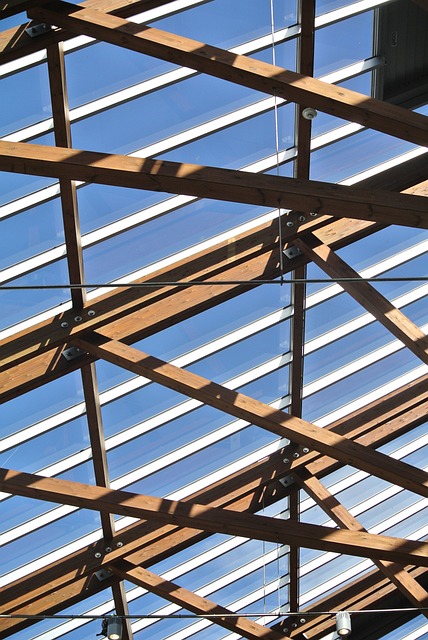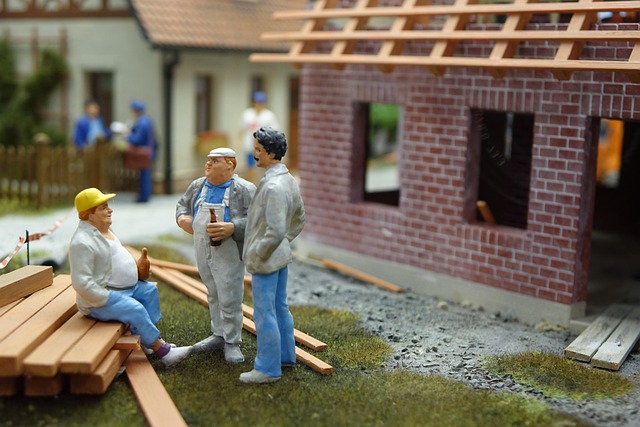Expert Roof Inspections for Austin: Preventing Damage with Advanced Techniques
Roof problems in Austin, Texas, are common due to the city's unique climate. Regular inspections are vital for homeowners to identify issues early, preventing costly repairs and ensuring roof protection. Modern detection techniques like infrared thermography and drone technology enhance accurac…….

Roof problems in Austin, Texas, are common due to the city's unique climate. Regular inspections are vital for homeowners to identify issues early, preventing costly repairs and ensuring roof protection. Modern detection techniques like infrared thermography and drone technology enhance accuracy and efficiency. Proactive maintenance through routine checks saves money, boosts home value, and provides peace of mind, especially in areas exposed to extreme weather conditions.
In Austin, where climate variations present unique challenges, regular roof inspections are crucial for maintaining your home’s integrity. This article delves into the significance of identifying and addressing potential roof problems early on. We explore the benefits of routine checks, advanced detection techniques for repairs, and essential maintenance tips to prevent costly damages. By understanding common issues specific to Austin’s climate, homeowners can effectively safeguard their properties with expert roof repair services tailored to meet their needs.
- Understanding Roof Problems in Austin's Climate
- The Benefits of Regular Roof Inspections
- Advanced Detection Techniques for Roof Repairs
- Preventing Damages: Maintenance Tips and Common Issues Addressed
Understanding Roof Problems in Austin's Climate

Roof problems in Austin, Texas, are a common concern due to the city’s unique climate. With hot summers and occasional severe weather events, including hailstorms, the region experiences significant stress on roofing materials. The combination of intense sunlight and fluctuating temperatures can lead to various issues such as cracked shingles, damaged underlayment, and even structural weakening over time. Regular roof inspections are essential for Austin homeowners to stay ahead of these problems.
Identifying potential issues early is crucial for effective roof repair Austin services. Common signs include visible damage after storms, water stains on interior ceilings, or uneven roofing surfaces. By scheduling routine inspections, residents can avoid costly repairs and ensure their homes remain protected. Understanding the climate’s impact on roofs enables homeowners to make informed decisions regarding maintenance and replacement, ultimately extending the lifespan of their roofing systems.
The Benefits of Regular Roof Inspections

Regular roof inspections are an invaluable investment for any homeowner, offering a proactive approach to maintaining your property’s most crucial protective element—your roof. In Austin, where varying weather conditions can take a toll on rooftops, these inspections are especially critical. By scheduling routine checks, you can catch potential issues early on, preventing minor problems from escalating into costly and time-consuming roof repair Austin residents might otherwise face.
Such inspections provide several significant advantages. They allow for the identification of missing or damaged shingles, flashing problems, or signs of water intrusion—all of which could lead to substantial interior damage if left unaddressed. Moreover, regular inspections can help ensure your roof meets safety standards and codes, enhancing the overall value of your home. Proactive maintenance not only saves money in the long run but also guarantees peace of mind, knowing your roof is in top condition to protect against the elements.
Advanced Detection Techniques for Roof Repairs

In the realm of roof repairs, Austin residents and businesses can benefit from advanced detection techniques that go beyond the traditional visual inspection. Modern technology has revolutionized roof maintenance by providing more accurate and comprehensive assessments. One such technique involves infrared thermography, which uses heat-sensing cameras to identify temperature variations on the roof surface. This method is crucial in detecting potential issues like hidden leaks, poor ventilation, or areas of damaged shingles, often unseen by the naked eye.
Additionally, drones equipped with high-resolution cameras and sensors offer a game-changer in roof repair austin. These unmanned aerial vehicles can capture detailed images and data from hard-to-reach areas, enabling professionals to navigate complex rooftops efficiently. Drones also reduce the risk to technicians and provide a cost-effective solution for regular maintenance checks, ensuring any problems are addressed early, thus preventing further damage and costly repairs.
Preventing Damages: Maintenance Tips and Common Issues Addressed

Regular roof inspections are a proactive step in preventing costly damages and maintaining the structural integrity of your home, especially in areas prone to extreme weather like Austin, Texas. By identifying potential issues early on, homeowners can avoid major repairs and ensure their roofs provide adequate protection against the elements.
Common problems addressed during these inspections include missing or damaged shingles, flashing issues, and signs of water intrusion. Prompt roof repair Austin services can fix these problems before they lead to more severe damage, such as rotted wood, mold growth, or even structural collapse. Regular maintenance also involves checking for proper drainage systems, ensuring gutters are clear, and assessing the overall condition of the roof’s underlayment.
Regular roof inspections are a crucial aspect of maintaining your home’s integrity, especially in Austin’s unique climate. By identifying potential issues early on, you can prevent costly and time-consuming roof repairs. Through advanced detection techniques and proactive maintenance, homeowners can safeguard their investments and ensure the longevity of their roofs. Remember, when it comes to roof repair Austin has many options, but a well-informed and proactive approach is key.







